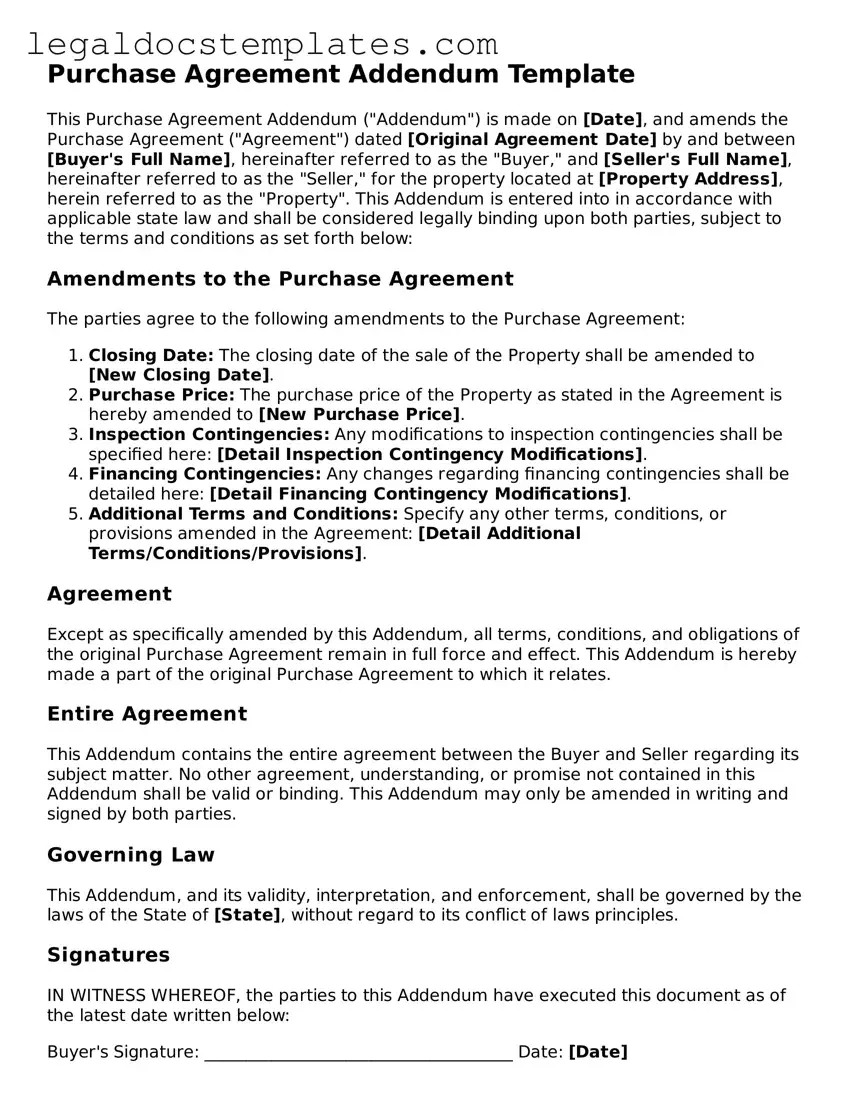Purchase Agreement Addendum Template
This Purchase Agreement Addendum ("Addendum") is made on [Date], and amends the Purchase Agreement ("Agreement") dated [Original Agreement Date] by and between [Buyer's Full Name], hereinafter referred to as the "Buyer," and [Seller's Full Name], hereinafter referred to as the "Seller," for the property located at [Property Address], herein referred to as the "Property". This Addendum is entered into in accordance with applicable state law and shall be considered legally binding upon both parties, subject to the terms and conditions as set forth below:
Amendments to the Purchase Agreement
The parties agree to the following amendments to the Purchase Agreement:
- Closing Date: The closing date of the sale of the Property shall be amended to [New Closing Date].
- Purchase Price: The purchase price of the Property as stated in the Agreement is hereby amended to [New Purchase Price].
- Inspection Contingencies: Any modifications to inspection contingencies shall be specified here: [Detail Inspection Contingency Modifications].
- Financing Contingencies: Any changes regarding financing contingencies shall be detailed here: [Detail Financing Contingency Modifications].
- Additional Terms and Conditions: Specify any other terms, conditions, or provisions amended in the Agreement: [Detail Additional Terms/Conditions/Provisions].
Agreement
Except as specifically amended by this Addendum, all terms, conditions, and obligations of the original Purchase Agreement remain in full force and effect. This Addendum is hereby made a part of the original Purchase Agreement to which it relates.
Entire Agreement
This Addendum contains the entire agreement between the Buyer and Seller regarding its subject matter. No other agreement, understanding, or promise not contained in this Addendum shall be valid or binding. This Addendum may only be amended in writing and signed by both parties.
Governing Law
This Addendum, and its validity, interpretation, and enforcement, shall be governed by the laws of the State of [State], without regard to its conflict of laws principles.
Signatures
IN WITNESS WHEREOF, the parties to this Addendum have executed this document as of the latest date written below:
Buyer's Signature: _____________________________________ Date: [Date]
Seller's Signature: ____________________________________ Date: [Date]
